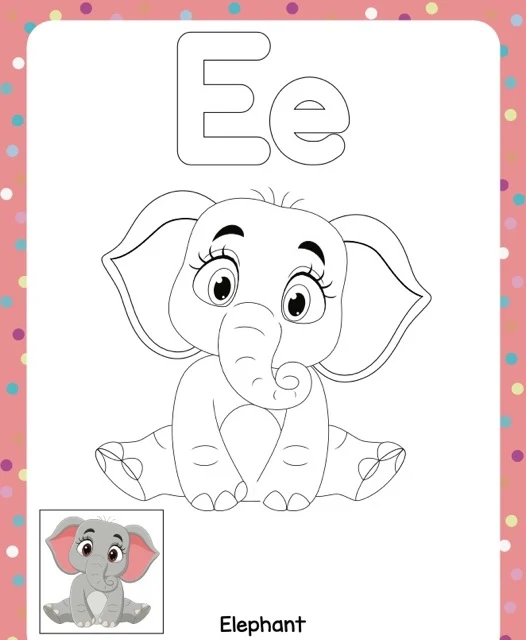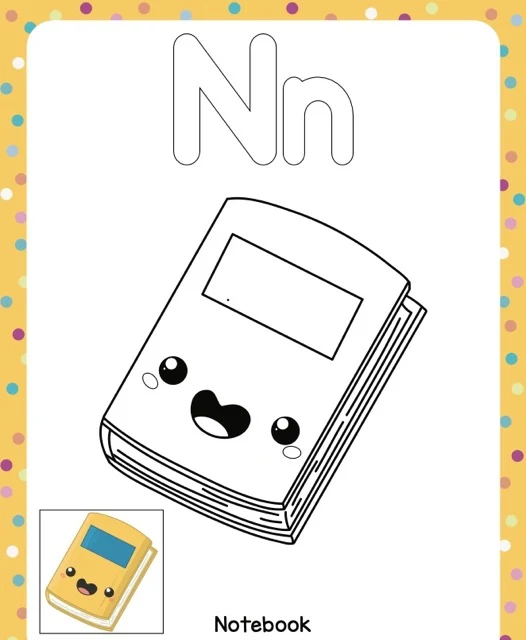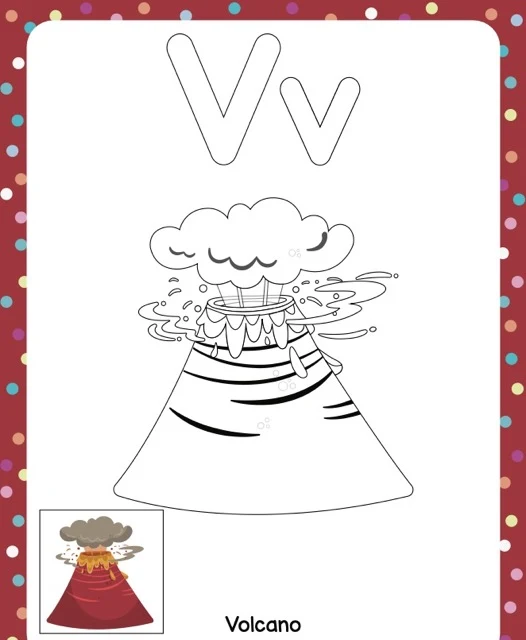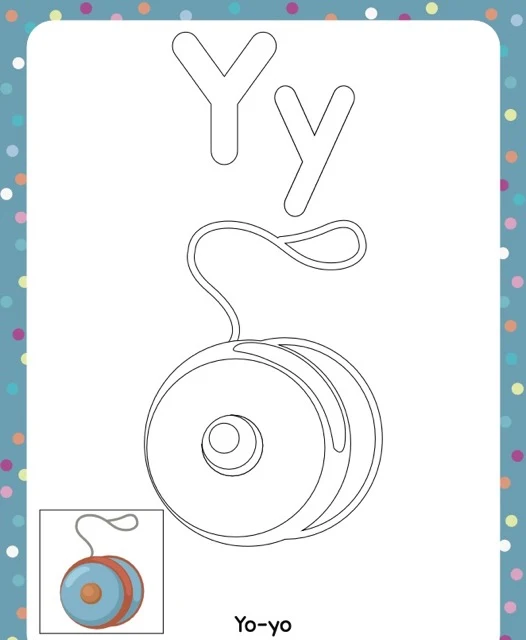Alphabet Coloring: A Preschool Learning Method
Alphabet Coloring is a reviewed educational method using coloring pages to teach preschoolers (ages 3-6) letter recognition. The method's benefits include improved letter recognition, fine motor skill development, creative expression, and focus enhancement. Effective use involves guiding children to identify letters and objects, then allowing creative coloring. The method is versatile, suitable for homes, classrooms, and various learning styles, with readily available resources. Key page elements include clear illustrations, uppercase and lowercase letters, and object names, often themed for engagement.
Alphabet Coloring: A Comprehensive Review
Alphabet Coloring: A Comprehensive Review
This briefing document reviews the main themes and key takeaways from provided excerpts focusing on the educational activity of Alphabet Coloring.
What is Alphabet Coloring?
Alphabet Coloring is a learning tool aimed primarily at preschool and kindergarten children (ages 3-6). It combines the act of coloring with letter recognition by associating letters with corresponding objects. As described in "Alphabet Coloring: A Guide for Parents and Teachers," it is "a fun and educational activity that combines coloring with letter recognition." Children color illustrations of objects while simultaneously being introduced to the corresponding letter.
Benefits of Alphabet Coloring:
The provided sources consistently highlight the multi-faceted benefits of Alphabet Coloring:
●
Enhanced Letter Recognition: Coloring pages provide a visual link between the letter and a familiar object. This association aids in letter identification and memorization. "Alphabet Coloring: A Comprehensive Guide" emphasizes that it "help[s] children learn letter recognition by associating letters with corresponding objects in a fun and engaging way."
●
Fine Motor Skill Development: The act of coloring necessitates controlled hand movements and hand-eye coordination. "The act of coloring within the lines on Alphabet Coloring pages requires precise hand movements and hand-eye coordination," notes "Alphabet Coloring: A Comprehensive Guide." This repetitive action strengthens the small muscles in the hands and fingers, crucial for writing and other essential skills.
●
Creative Expression: Children can freely choose colors and express themselves artistically while coloring. This open-ended approach, as highlighted in "Alphabet Coloring: A Comprehensive Guide," "encourages self-expression, imagination, and the development of artistic sensibilities."
●
Focus and Concentration: Coloring requires sustained attention and promotes concentration skills. "Alphabet Coloring: A Guide for Parents and Teachers" specifically mentions that "Coloring encourages children to focus on a task and develop concentration skills."
Using Alphabet Coloring Effectively:
The sources offer a consistent approach to maximizing the benefits of Alphabet Coloring:
1.
Print the Page: Select an age-appropriate page featuring a letter and corresponding object.
2.
Identify the Letter: Guide the child to recognize the uppercase and lowercase forms of the letter.
3.
Name the Object: Help the child name the illustrated object and connect it to the letter.
4.
Coloring Time: Allow the child to color the illustration using their preferred colors. Encourage creativity and exploration.
Incorporating Alphabet Coloring in Various Settings:
●
Homeschooling: Parents can easily integrate Alphabet Coloring into daily routines, using it as a fun and educational activity.
●
Classroom Learning: Teachers can utilize Alphabet Coloring pages in various ways, including:
○
Lesson Plans: Integrating them into structured lessons on the alphabet.
○
Literacy Centers: Creating designated areas where children can engage with coloring pages independently.
○
Individual Activities: Assigning coloring sheets for individual practice and reinforcement.
Key Elements of Alphabet Coloring Pages:
Analysis of the "Testing Theme: Alphabet Coloring.pdf" excerpt reveals consistent elements on each page:
●
Uppercase and Lowercase Letters: Both forms of the letter are prominently displayed.
●
Illustration: A clear, engaging illustration of an object starting with the featured letter.
●
Object Name: The name of the object is printed clearly, reinforcing word association.
●
Isolated Image: A smaller, isolated image of the object is provided, potentially for additional activities or crafts.
Themed Alphabet Coloring:
Themed Alphabet Coloring pages, such as those centered around animals, objects, food, or holidays, offer increased engagement and cater to diverse interests. As noted in "Alphabet Coloring: A Comprehensive Guide," themed pages "ensure an enjoyable learning experience tailored to individual preferences."
Accessibility:
Alphabet Coloring pages are readily available from various sources:
●
Online: Numerous websites offer free and paid printable options.
●
Activity Books: Many educational activity books feature Alphabet Coloring sections.
●
Educational Stores: Physical stores specializing in educational materials offer a range of options.
Conclusion:
Alphabet Coloring is a valuable and versatile educational tool for young children. It effectively blends entertainment with learning, fostering letter recognition, fine motor skill development, creativity, and focus. Its accessibility and adaptability make it suitable for diverse learning environments, offering a fun and engaging way to introduce children to the world of letters and language.
Alphabet Coloring: A Guide for Parents and Teachers
Alphabet Coloring FAQ
What is Alphabet Coloring?
Alphabet Coloring is a fun and educational activity that combines coloring with letter recognition. Children can color in illustrations of objects while learning the corresponding letter of the alphabet.
What age group is Alphabet Coloring suitable for?
Alphabet Coloring is ideal for preschool and kindergarten children, ages 3-6, who are learning the alphabet and developing fine motor skills.
What are the benefits of Alphabet Coloring?
Alphabet Coloring offers several benefits:
●
Letter Recognition: Children learn to associate letters with objects, strengthening their alphabet knowledge.
●
Fine Motor Skill Development: Coloring helps refine hand-eye coordination and control.
●
Creativity: Coloring allows children to express themselves creatively through color choices.
●
Focus and Concentration: Coloring encourages children to focus on a task and develop concentration skills.
What materials do I need for Alphabet Coloring?
You will need:
●
Printed Alphabet Coloring pages.
●
Crayons, markers, or colored pencils.
How do I use Alphabet Coloring pages?
1.
Print the desired Alphabet Coloring page.
2.
Instruct the child to identify the letter on the page.
3.
Encourage the child to name the object on the page.
4.
Let the child color the illustration using their chosen colors.
Can Alphabet Coloring be used in a classroom setting?
Yes, Alphabet Coloring is a valuable tool for classroom learning. Teachers can incorporate it into lesson plans, literacy centers, or individual activities.
Are there different themes available for Alphabet Coloring?
Yes, Alphabet Coloring pages come in various themes, such as animals, objects, food, and holidays, making it engaging for different interests.
Where can I find Alphabet Coloring pages?
Alphabet Coloring pages are widely available online, in activity books, and educational stores. You can also find free printable pages on various websites.
Alphabet Coloring: A Comprehensive Guide
Alphabet Coloring: A Study Guide
Quiz
Instructions: Answer the following questions in 2-3 sentences each.
1.
What is the primary purpose of Alphabet Coloring?
2.
Identify the target age group for Alphabet Coloring activities.
3.
Explain how Alphabet Coloring pages contribute to fine motor skill development in young children.
4.
Describe the recommended steps for using Alphabet Coloring pages effectively.
5.
How can Alphabet Coloring be incorporated into a classroom setting?
6.
What types of materials are necessary for engaging in Alphabet Coloring?
7.
Explain the advantages of using themed Alphabet Coloring pages.
8.
Where can educators and parents find Alphabet Coloring pages?
9.
Analyze the "Testing Theme: Alphabet Coloring.pdf" excerpt and identify the key elements included on each page.
10.
Based on the provided excerpts, discuss how Alphabet Coloring fosters creativity in children.
Answer Key
1.
The primary purpose of Alphabet Coloring is to help children learn letter recognition by associating letters with corresponding objects in a fun and engaging way.
2.
Alphabet Coloring activities are most suitable for preschool and kindergarten children between the ages of 3 and 6, as they begin to learn the alphabet and develop crucial fine motor skills.
3.
The act of coloring within the lines on Alphabet Coloring pages requires precise hand movements and hand-eye coordination. These actions strengthen the small muscles in children's hands and fingers, ultimately improving their fine motor skills.
4.
Begin by printing the desired Alphabet Coloring page. Then, guide the child to identify the letter on the page and encourage them to name the illustrated object. Finally, allow the child to freely express their creativity by coloring the illustration using their preferred colors.
5.
Alphabet Coloring is a versatile activity that can be seamlessly integrated into various classroom settings. Teachers can utilize it during lesson plans, establish dedicated literacy centers, or assign individual activities.
6.
To participate in Alphabet Coloring, you will need printed Alphabet Coloring pages and a selection of coloring materials such as crayons, markers, or colored pencils.
7.
Themed Alphabet Coloring pages cater to a wider range of interests, keeping children engaged and motivated to learn. By offering diverse themes like animals, objects, food, and holidays, these pages ensure an enjoyable learning experience tailored to individual preferences.
8.
Alphabet Coloring pages are readily accessible through various sources. Individuals can find them online, in activity books, educational stores, and even as free printable pages on numerous websites.
9.
Each page in the "Testing Theme: Alphabet Coloring.pdf" excerpt showcases a specific letter of the alphabet in both uppercase and lowercase forms. It features a visually appealing illustration of an object corresponding to that letter, the object's name, and a smaller, isolated image of the object.
10.
Alphabet Coloring promotes creativity by providing children with the freedom to select and apply colors to the illustrations as they see fit. This open-ended approach encourages self-expression, imagination, and the development of artistic sensibilities.
Essay Questions
1.
Discuss the role of visual aids in enhancing letter recognition through Alphabet Coloring.
2.
Evaluate the effectiveness of Alphabet Coloring as a supplementary learning tool for early childhood education.
3.
Analyze the potential impact of Alphabet Coloring on a child's cognitive and social-emotional development.
4.
Compare and contrast the benefits of traditional Alphabet Coloring with digital versions using coloring apps or software.
5.
Develop a comprehensive lesson plan that incorporates Alphabet Coloring to teach a specific letter of the alphabet and its corresponding sound.
Glossary of Key Terms
●
Alphabet Coloring: An educational activity that combines coloring with letter recognition, aimed at helping children learn the alphabet.
●
Fine Motor Skills: The ability to make precise movements using the small muscles in the hands and fingers.
●
Hand-Eye Coordination: The ability to coordinate visual information with hand movements.
●
Letter Recognition: The ability to identify and name letters of the alphabet.
●
Literacy Centers: Designated areas within a classroom where students engage in literacy-focused activities independently or in small groups.
●
Themed Alphabet Coloring: Alphabet Coloring pages centered around specific themes, such as animals, objects, food, or holidays.
●
Visual Aids: Educational materials that use visual elements, such as images and colors, to enhance learning and comprehension.

























